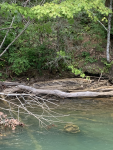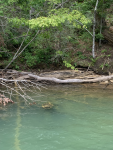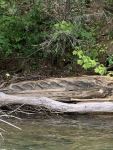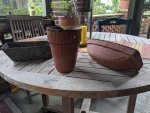SouthGa Fisher
Senior Member
If this is the wrong forum please move or let me know. Came across this while fishing in NE Georgia…anyone have any thoughts on it? My thoughts are man-made, looks like it was carved out. It is about 10 feet long. Found it in a river arm that fluctuates heavily with rain and water releases. I hope this rain doesn't wash it out so I can go get a better look.
I've never been incredibly interested in finding old stuff but I may get in this area and walk the banks when it gets drawn down a little further.
I've never been incredibly interested in finding old stuff but I may get in this area and walk the banks when it gets drawn down a little further.





